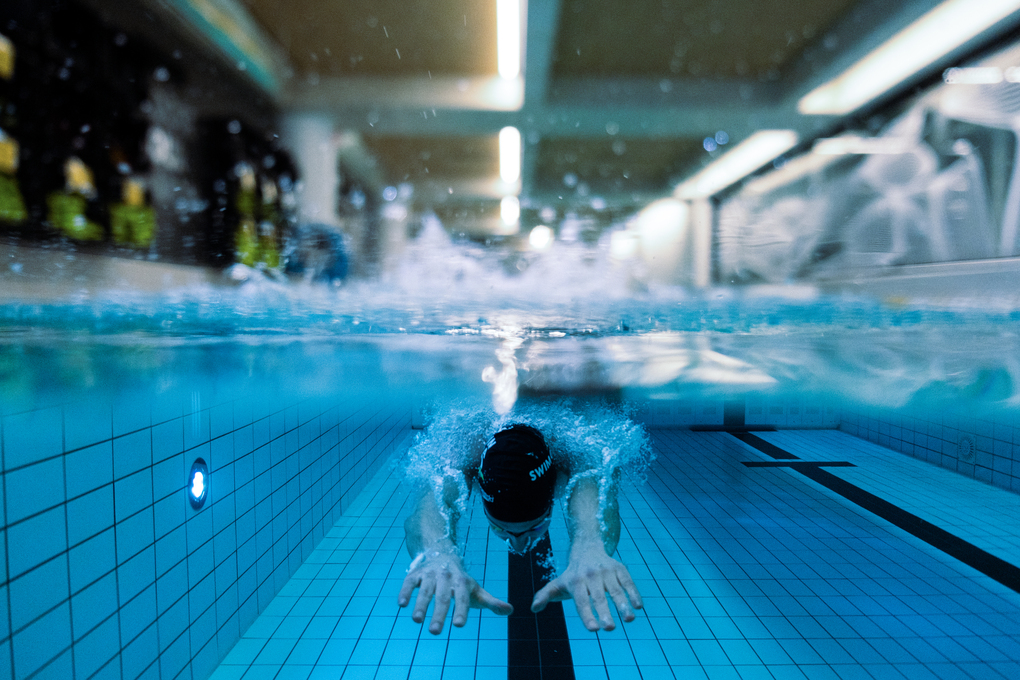Swimming blog - TRAINING How to get back into swimming shape?
After a period of no training it can feel scary to get back into the pool. You’ll feel a little bit nervous and rusty. Please don’t be discouraged, with the right tools it is an extremely enjoyable process. Just follow these top tips to get back into swimming shape in no time.
An absence from swimming, whether it be because of an injury or circumstance, can be frustrating and demotivating. The experts are all in agreement that staying active during an absence from swimming flattens the drop off in fitness curve and helps us get back in to shape quicker. Make sure that staying active during an injury is in consultation with your physio.
But now you are back in the pool and ready to go, what are the key elements you need to keep in mind going forward after being away from the pool for an extended period of time?
1. Patience
It’s natural to want to get in and start where you left off. It’s the human element that makes starting back up a real skill. Our brains remember how it was when we stopped at the apex of our training. It is that moment we remember, not all the months or years of work to get to that point. Take your time. Don’t force the issue by overtraining or being impatient with the results. Trust yourself and the training in the past and you will see that, slowly, you will return to your former level. Rome wasn’t built in a day and that applies to your swim fitness. Taking the time to build up your fitness is key.
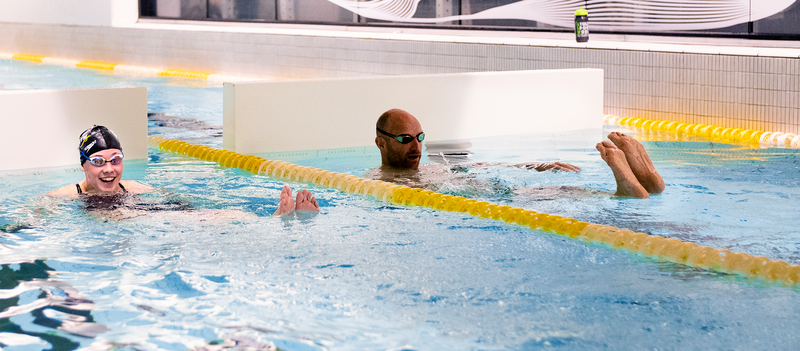
2. Quality vs Quantity
While this is the mindset we should always have when swimming, it is especially important when returning from a long absence. Focusing on the technical aspects of our stroke is particularly valuable at this stage. It allows us to regain a feel for the water and muscle memory without leading to overtraining, fatigue or injury. The focus on quality will make swimming a lot more fun in the first few weeks back in the pool and dare we might say, a faster swimmer in the end.
The technical aspects we recommend you to focus on first is breathing and body positioning. See our tutorials to get started and make the first block of swimming you do of the best quality.
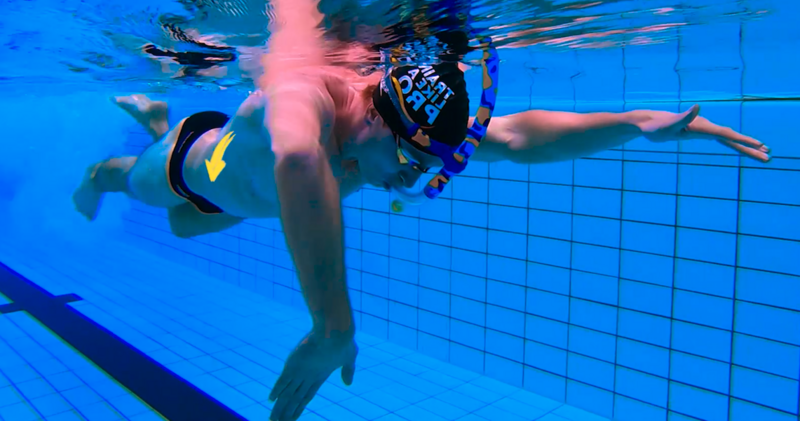
3. Feel for the water - Sculling
Another quality aspect on your return is sculling. Sculling is a great way to create a feel for the water.
As much as the dryland training regimes can help maintain your fitness, there is no substitute for actually swimming. The water will feel different when you get back into the water. It will feel like your hands are slipping and that you don’t really have a grip on the water. Understandable and very natural, so don’t worry about it. To get the feeling back, scull, scull and scull some more. Sculling is a perfect drill to recapture that lost feel without getting frustrated about lack of speed. Because drills are meant to be done slowly, and we will repeat this mantra until the end of days, it is perfect to qualify your return.
There are several sculling exercises you can try. All are great for getting your feel for the water back. One of our favorites is the combination scull. Check it out in our drills section to get you started.
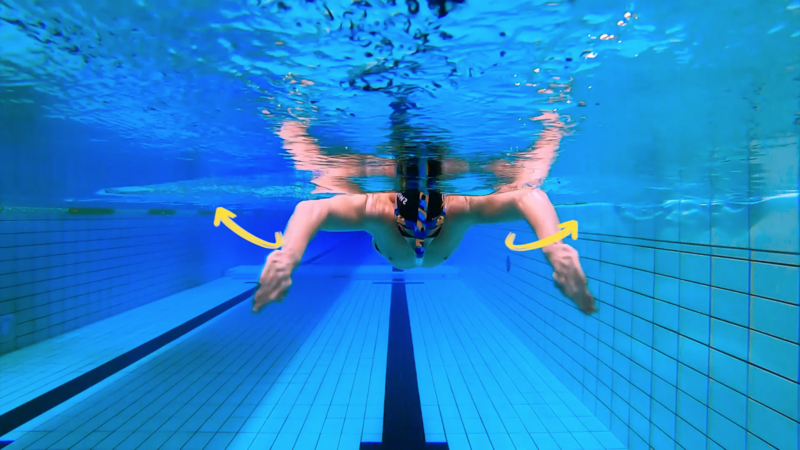
4. Control your breathing
You are going to feel like a fish out of water when you get back in. Especially your breathing will need some work. Start with breathing exercises, like the tuck & sink drill to get used to the feeling of breathing out underwater again. Breathing out underwater is especially important when swimming freestyle. Besides that, try working with some different breathing rhythms in warm up. This will help you find your flow again.
Another good idea is to warm up your lungs with a 25 meter breaststroke underwater or underwater dolphin kicks. This will open the lungs and the dolphin kicks will get you focused on streamlining your body while swimming. The streamlining will stretch and mobilise your shoulders. The dolphin kick will activate your core and get those muscles back into the game.
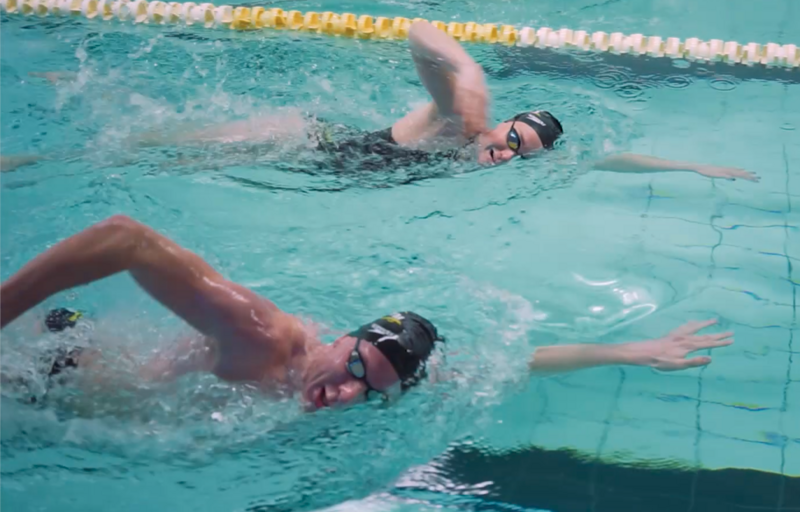
5. Pull & kick
It’s a good idea to start off with swimming sets of pull and kick. By isolating the kick and pull it helps you stay focussed on your technique. With pulling you can solely focus on your pull technique while maintaining a straight and horizontal body position in the water. Kicking with a kickboard is a good stretch for your shoulders, and at the same time you can focus on your breathing. Doing kick and pull when returning to swimming is a great way to get the heart rate up while training core stability and working on your body position.
If you don't know where to start, we have a kick & pull collection you can do. It's simple yet very effective. You can make it as long or as short as you want to tailor to your specific needs. Do this and your return to swimming will be fluid.
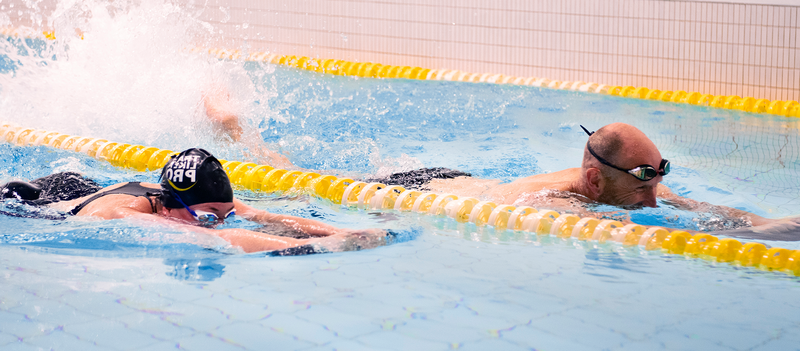
Conclusion
Getting back in the water after a time-out can be mentally and physically challenging. By having as much fun as possible, working on the quality of your sessions and keeping your expectations in check, you will back to full speed in no time.
